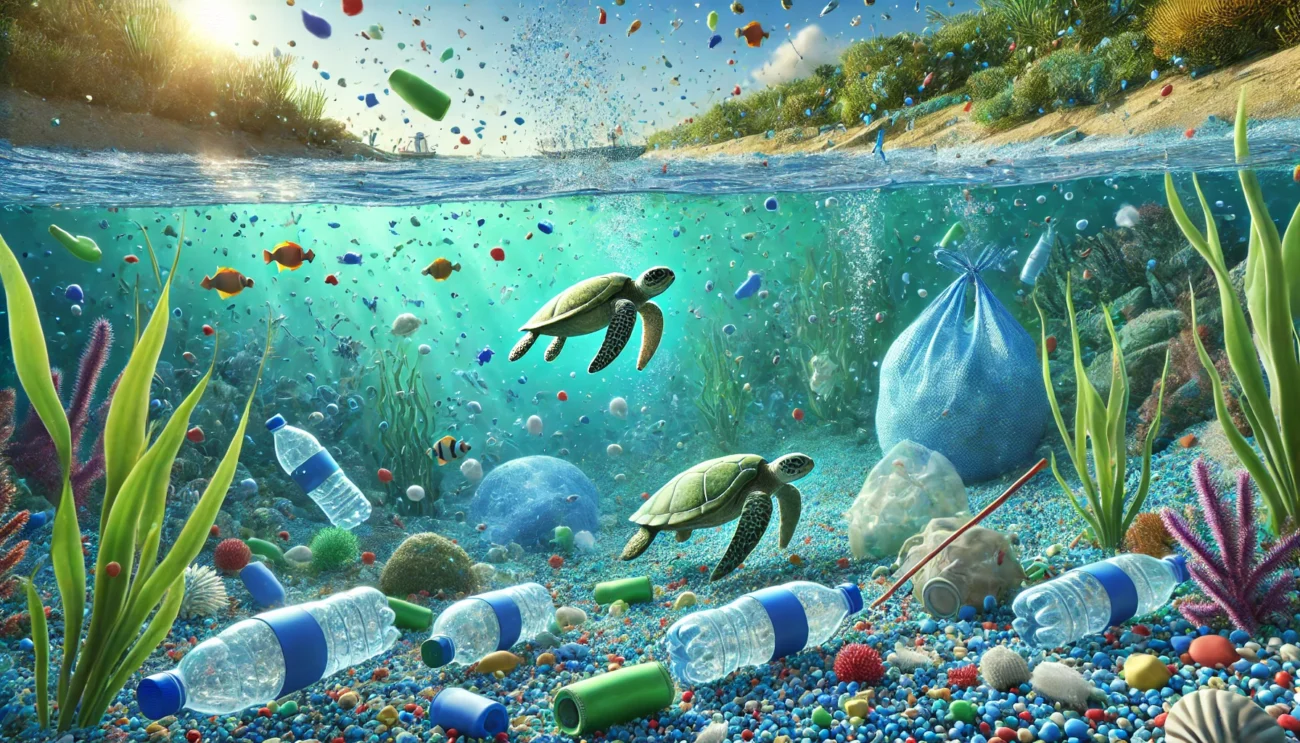Introduction
In recent years, microplastics have emerged as a critical environmental and health concern. These tiny plastic particles, measuring less than 5 millimeters in size, are found in oceans, rivers, soil, and even in the air we breathe. Microplastics have infiltrated our food chain and are now present in human organs, raising serious concerns about their impact on health and ecosystems. This article explores the sources, effects, and solutions to the growing microplastic crisis.
What Are Microplastics?
Microplastics are small plastic fragments that are non-biodegradable and can persist in the environment for centuries. They are categorized into two types:
1. Primary Microplastics
These are intentionally produced tiny plastic particles used in personal care products, industrial applications, and synthetic fibers. Examples include:
- Microbeads in face scrubs and toothpaste
- Plastic pellets (nurdles) used in manufacturing
- Fibers from synthetic clothing like polyester and nylon
2. Secondary Microplastics
These result from the breakdown of larger plastic waste due to environmental factors such as sunlight, waves, and friction. Common sources include:
- Plastic bags and bottles breaking down over time
- Fishing nets and ropes degrading in seawater
- Car tires shedding particles as they wear out on roads
How Do Microplastics Enter the Environment?
Microplastics are pervasive because they enter the environment through multiple pathways:
1. Industrial and Domestic Waste
Plastics discarded as household waste, industrial byproducts, and improperly disposed packaging contribute significantly to microplastic pollution.
2. Sewage and Wastewater Treatment Plants
Many microplastics come from personal care products, textiles, and detergents, which enter sewage systems and eventually reach water bodies.
3. Atmospheric Deposition
Recent studies show microplastics are present in the air we breathe. These airborne particles come from the breakdown of rubber tires, industrial emissions, and synthetic fibers from clothes.
4. Agricultural and Fishing Practices
Plastic use in mulching films, greenhouses, fertilizers containing plastic coatings, and discarded fishing gear contribute to microplastic contamination in soil and water.
The Impact of Microplastics on Health and Environment
1. Effects on Marine and Terrestrial Life
Marine organisms, including fish, shellfish, and plankton, ingest microplastics, mistaking them for food. This leads to:
- Physical harm (blockage in digestive tracts)
- Reduced fertility and growth
- Toxin accumulation in their bodies
On land, microplastics affect soil health, plant growth, and even livestock that consume contaminated feed and water.
2. Human Health Risks
Since microplastics have been detected in human lungs, blood, and even placentas, scientists are studying their potential health risks:
- Inflammation and cell damage in organs
- Hormonal disruptions from chemicals like BPA and phthalates
- Toxic heavy metal accumulation linked to various diseases
3. Environmental Pollution and Climate Change
Microplastics not only pollute land and water but also contribute to climate change. Burning plastic waste releases greenhouse gases, worsening global warming.
Where Are Microplastics Found?
1. Drinking Water
Studies reveal that bottled and tap water contain microplastics. Contamination occurs through:
- Plastic packaging leaching particles into bottled water
- Aging pipelines shedding plastic materials into tap water
2. Food and Beverages
Microplastics have been detected in seafood, salt, honey, beer, and vegetables. Fish and shellfish, in particular, accumulate microplastics in their tissues, which are consumed by humans.
3. Air and Dust
Plastic particles suspended in the air can be inhaled, posing respiratory risks. Indoor environments, especially those with synthetic carpets and furniture, have high microplastic concentrations.
How Can We Reduce Microplastic Pollution?
1. Reduce Single-Use Plastics
Avoiding plastic bags, straws, and disposable cutlery can significantly reduce plastic waste. Opt for reusable and biodegradable alternatives.
2. Choose Natural Fabrics
Synthetic clothing sheds microfibers during washing. Switching to cotton, wool, or hemp can reduce microfiber pollution.
3. Proper Waste Management
Governments and industries must invest in better recycling systems and waste disposal methods to prevent plastic pollution.
4. Support Bans on Microplastics
Many countries are banning microbeads in cosmetics and restricting single-use plastics. Supporting such policies can help combat the crisis.
5. Use Microplastic Filters in Washing Machines
Innovations like washing machine filters that trap microfibers before they enter wastewater can be an effective solution.
6. Raise Awareness and Encourage Eco-Friendly Choices
Educating people about the dangers of microplastics and promoting sustainable alternatives can drive positive environmental change.
Conclusion
Microplastics pose a serious threat to environmental sustainability, marine life, and human health. While they are deeply embedded in modern life, conscious efforts to reduce plastic waste, improve recycling, and support research on alternative materials can help mitigate their impact. Governments, industries, and individuals must work together to curb microplastic pollution and ensure a healthier future for generations to come.






